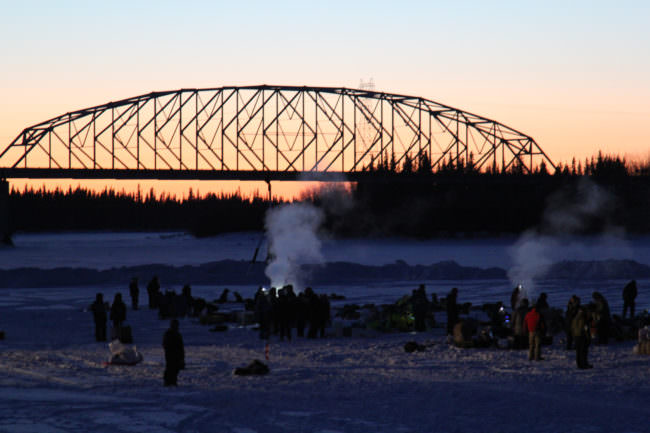
It’s hard to talk about the Iditarod without mentioning weather and climate. And this year is no exception, with mushers and dogs enduring extreme cold in first part of the race.
Climatologist Brian Brettschneider looks into how this year’s cold and snow stacks up to weather records from past races. He says the start Monday in Fairbanks was -19, by far the coldest in Iditarod history.
“If you look at the low for the day, it was -38, but it had warmed up — using the term “warm” loosely — to -19,” Brettschneider said.
Since the Iditarod started in 1973 that was the coldest start by a wide margin. The cold is only supposed to last for a couple of days, then rise into the 20s or even 30s, with lows in the single digits and teens.
“So the extreme cold going on right now is a short term phenomenon,” Brettschneider said.
As for snow, there’s plenty on the route already, but “none of the checkpoints along the way are forecasting even a flake of snow,” Brettschneider said. “That’s subject to change, potentially, but to have no snow for that long a period for the entire route is really uncommon.”
Even though March is the driest month of the year in much of Alaska, there have been very few years when the week of the Iditarod recorded no snow.
The extreme cold seems notable now, but “when you average the beginning to the end, it’s going to go down as probably a pretty typical race period, temperature-wise,” according to Brettschneider.
Alaska’s Energy Desk is checking in with climatologist Brian Brettschneider each week as part of the segment, Ask a Climatologist. What do you want to ask?
Annie Feidt is the broadcast managing editor at Alaska Public Media. Reach her at afeidt@alaskapublic.org. Read more about Annie here.





